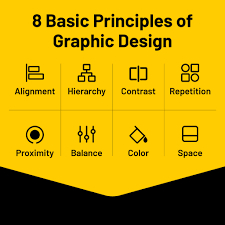The Art of Graphic Design: Turning Ideas into Visual Masterpieces
raphic design is more than just arranging shapes and colors on a canvas; it's about transforming abstract concepts and ideas into compelling visual stories. In today's digital age, where visuals play a crucial role in capturing attention and conveying messages, the art of graphic design has never been more relevant. This article delves into the intricacies of graphic design, exploring its evolution, principles, tools, and the process of turning ideas into captivating visual masterpieces.

Evolution of Graphic Design:
Graphic design has a rich history that dates back centuries, from ancient cave paintings to the illuminated manuscripts of the Middle Ages. The invention of the printing press in the 15th century revolutionized the field, enabling mass production of printed materials and the rise of typography as an art form. With the advent of the digital age, graphic design underwent a paradigm shift, transitioning from traditional mediums to digital platforms. Today, graphic design encompasses a wide range of disciplines, including branding, web design, illustration, and motion graphics.

Principles of Graphic Design:
At the heart of graphic design are fundamental principles that guide the creation of visually appealing and effective designs. These principles include balance, contrast, alignment, hierarchy, proximity, and repetition. Balance ensures visual harmony by distributing elements evenly throughout the composition, while contrast creates visual interest by juxtaposing different elements. Alignment and proximity help organize content and establish visual relationships, while hierarchy guides the viewer's eye through the design. Repetition reinforces visual consistency and strengthens branding.

Tools of the Trade:
Graphic designers rely on a variety of tools and software to bring their ideas to life. Adobe Creative Suite, which includes Photoshop, Illustrator, and InDesign, is the industry standard for graphic design software. These powerful tools allow designers to manipulate images, create vector graphics, and precisely layout print materials. Additionally, digital tablets and styluses provide a tactile way for designers to sketch and illustrate directly on the screen, bridging the gap between traditional and digital mediums.

The Process of Graphic Design:
Graphic design is a multi-faceted process that involves ideation, research, conceptualization, execution, and refinement. Understanding the client's objectives, target audience, and brand identity begins. Designers then conduct research to gather inspiration, explore trends, and study competitors. The conceptualization phase involves brainstorming ideas, sketching thumbnails, and developing rough drafts. Once a direction is chosen, designers move on to execution, where they bring their ideas to life using digital tools and techniques. Finally, designs are refined through feedback and iteration, ensuring they meet the client's needs and objectives.

Turning Ideas into Visual Masterpieces:
The hallmark of a successful graphic designer is the ability to translate abstract ideas and concepts into impactful visual solutions. This requires a combination of creativity, technical skill, and strategic thinking. Designers must have a keen understanding of color theory, typography, composition, and visual storytelling. They must also stay abreast of current design trends and emerging technologies to remain relevant in a constantly evolving field. By harnessing their creativity and expertise, graphic designers have the power to captivate audiences, evoke emotions, and inspire action through their work.

Conclusion:
In a world inundated with visual stimuli, the art of graphic design plays a pivotal role in shaping perceptions, influencing decisions, and fostering connections. From branding and advertising to web design and illustration, graphic design permeates every aspect of our lives. By mastering the principles, tools, and processes of graphic design, designers can transform ideas into visual masterpieces that resonate with audiences and stand the test of time. As technology continues to evolve and new mediums emerge, the possibilities for graphic design are limitless, offering endless opportunities for creativity and innovation.







.png)






